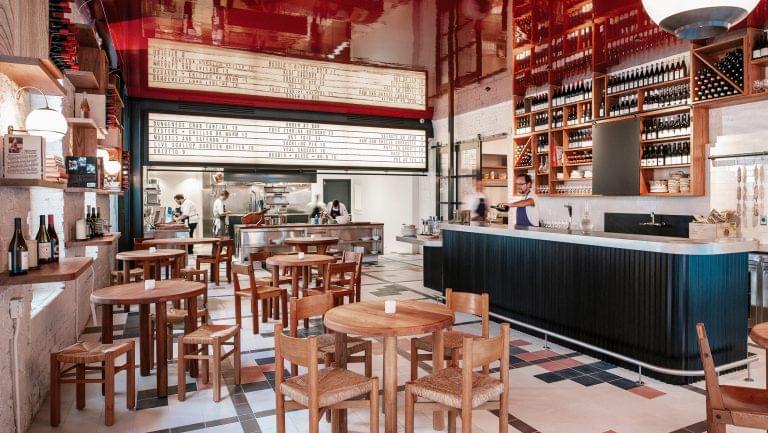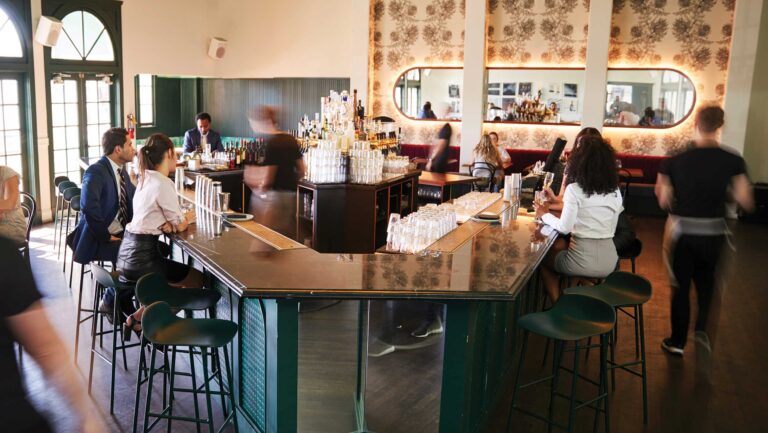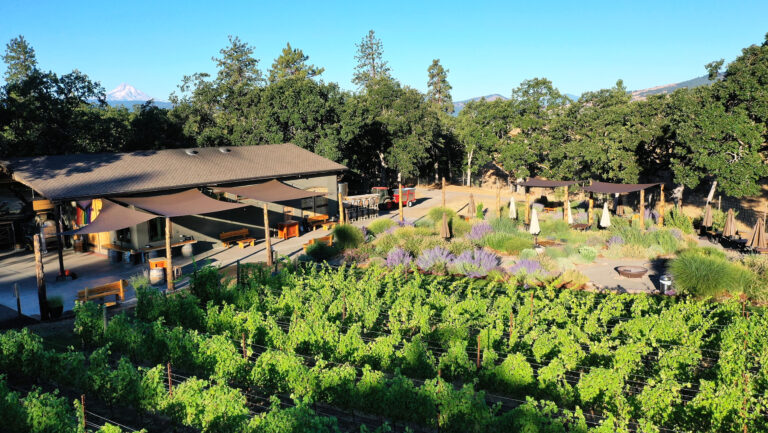Verjus, a wine bar that opened in San Francisco in January 2019 features a thumping soundtrack, a standing bar, and an extensive list of natural, biodynamic, and sustainable wines. It may come as a surprise that this wine bar, raucous as it is, is the creation of the owners of the three-Michelin-starred Quince and the highly regarded restaurant Cotogna. Yet these aren’t the only restaurateurs moving to emphasize wine. Others across the country are also expanding their portfolios by adding smaller venues that prioritize the wine program over the cuisine. SevenFifty Daily spoke with representatives from several restaurant groups about the decision to expand their businesses by adding wine bars.
With 66 establishments throughout Chicago—and more than 120 throughout nine states—Lettuce Entertain You Enterprises (LEYE) has a lock on Windy City dining. The organization took its time establishing a venue that made wine its focal point, according to the company’s wine director, Richard Hanauer, and executive partner Marc Jacobs. “We felt there was a hole in the Chicago market—[that it was lacking] great wine-focused concepts,” says Hanauer. “We had been wanting to do a wine bar for some time but were searching for the perfect location. Independently, we were working on a small plates–tapas idea, and Bar Ramone was a marriage of the two ideas.” LEYE opened Bar Ramone in August 2018 with a selection of 20 rotating wines by the glass, about 100 wines by the bottle, and Spanish tapas. The smallest of LEYE’s establishments, says Hanauer, “Bar Ramone is definitely a neighborhood spot.”
Following Trends
The McGuire Moorman Hospitality (MMH) group, based in Austin, Texas, has 12 restaurants and added June’s All Day to its portfolio in July 2016. The day-to-night café and wine bar was created to meet the needs of a growing market, says June Rodil, MS, MMH’s vice president of operations and the wine bar’s namesake. “[We] added a wine bar because there are more people interested in having wine on a daily basis,” she says, noting that there has been a rising interest in wine-focused experiences and that wine is no longer considered an indulgence to be enjoyed only on the weekend.

Don’t miss the latest drinks industry news and insights. Sign up for our award-winning newsletters and get insider intel, resources, and trends delivered to your inbox every week.
But June’s All Day also functions as an incubator for MMH’s other concepts. The beauty of June’s, says Rodil, is that it’s a great indicator of what the rest of the group’s wine lists will be doing. “The list changes every month, so there’s always a ‘June’s list education class,’ she says. “Buyers from all our other locations taste what we’re putting on. So [when] they’re tasting natural wine, they’re learning about natural wine, and they’re likely to put more natural wine on their lists in the coming months.”
Although these wine bars have personalities of their own, their operators suggest that tying the wine bar concept into the greater organization helps expand the overall business. “I think Verjus is going to reach a new audience,” says the bar’s wine director, Matt Cirne, “whether it’s a wine-centric audience or an audience that’s more open to the casual nature of dining and drinking here.” People may not go to fine-dining establishments like Quince regularly, but because it’s a more casual spot, Verjus is a place diners can drop by several nights a week.

Wine bars also allow restaurant groups to experiment with different formats. Citing the bars à vins of Paris as inspiration, the owners of Verjus added a retail component to the space. One wall offers bottles to go, which can also be consumed at the bar for a $20 corkage fee. “Verjus is the opportunity for us to delve into something new—which is retail,” says Cirne, “and hopefully, we’ll make good use of the relationships [with guests] over the years and create almost a different arm of the business.”
Additional Benefits
Adding a wine bar to a restaurant portfolio offers opportunities for greater profit margins. LEYE’s Jacobs cites “the higher percent of alcohol and wine sales combined with lower labor costs” as something that’s expected to be a strong driver of revenue at Bar Ramone. “We intentionally built a small kitchen with a small menu, which has enabled to us to run with fewer support staff members, including runners, expediters, and bussers,” he explains. “Our servers run food, the bartenders run food, our cooks run food—it’s a collaborative team effort.”

In the months since Bar Ramone has been open, Jacobs says that in addition to the guests who come for a tapas dinner, others are dropping by “before their meal and after their meal. There is not just one dinner rush—and we’re seeing guests at off-peak times,” which contributes to sales during nontraditional mealtimes. “Also, the food and drink menus change regularly,” says Jacobs, “which offers us flexibility and helps us keep a tighter control on our costs.” Rodil agrees. “When you’re talking about concepts,” she says, “you can create less waste if you’re more focused on your beverage program. A beverage program [inherently] has liquid assets with your inventory, whereas with food, there’s always a set amount of waste that you know is going to happen because product turns very quickly.”
Of course, there’s a pragmatic side to the wine bar business, suggests Cirne. “Restaurants operate in a really competitive space,” he says, “and I think that’s one of the reasons why we wanted to open what’s really more of a bar.” But profits aside, these wine-centric venues are passion projects for beverage directors. While the wine programs of restaurant groups are often overseen by a single director who manages the drinks concepts for all of a company’s outlets, many groups also employ a head sommelier for each individual restaurant whose job it is to manage the day-to-day wine buying. A wine bar, however, tends to remain directly under the leadership of the beverage director, who crafts the bar’s ethos and designs the wine list.
Whether the inspiration is a bar à vins like Verjus, or a place that features small-production rarities like Bar Ramone, at their core these wine bars are places where even the professionals themselves want to unwind after a long day.

Dispatch
Sign up for our award-winning newsletter
Don’t miss the latest drinks industry news and insights—delivered to your inbox every week.
Shana Clarke is a wine, sake, and travel writer, and the author of 150 Vineyards You Need To Visit Before You Die. Her work has appeared in Saveur, Fortune, NPR, Wine Enthusiast, and Hemispheres. She was shortlisted for the Louis Roederer 2020 International Wine Writers’ Awards and ranked one of the “Top 20 U.S. Wine Writers That Wineries Can Work With” by Beverage Trade Network in 2021. She holds a Level 3 Advanced Certificate from Wine & Spirit Education Trust and is a Certified Sake Sommelier. She will always say yes to a glass of Champagne. Learn more at www.shanaspeakswine.com and follow her @shanaspeakswine.







